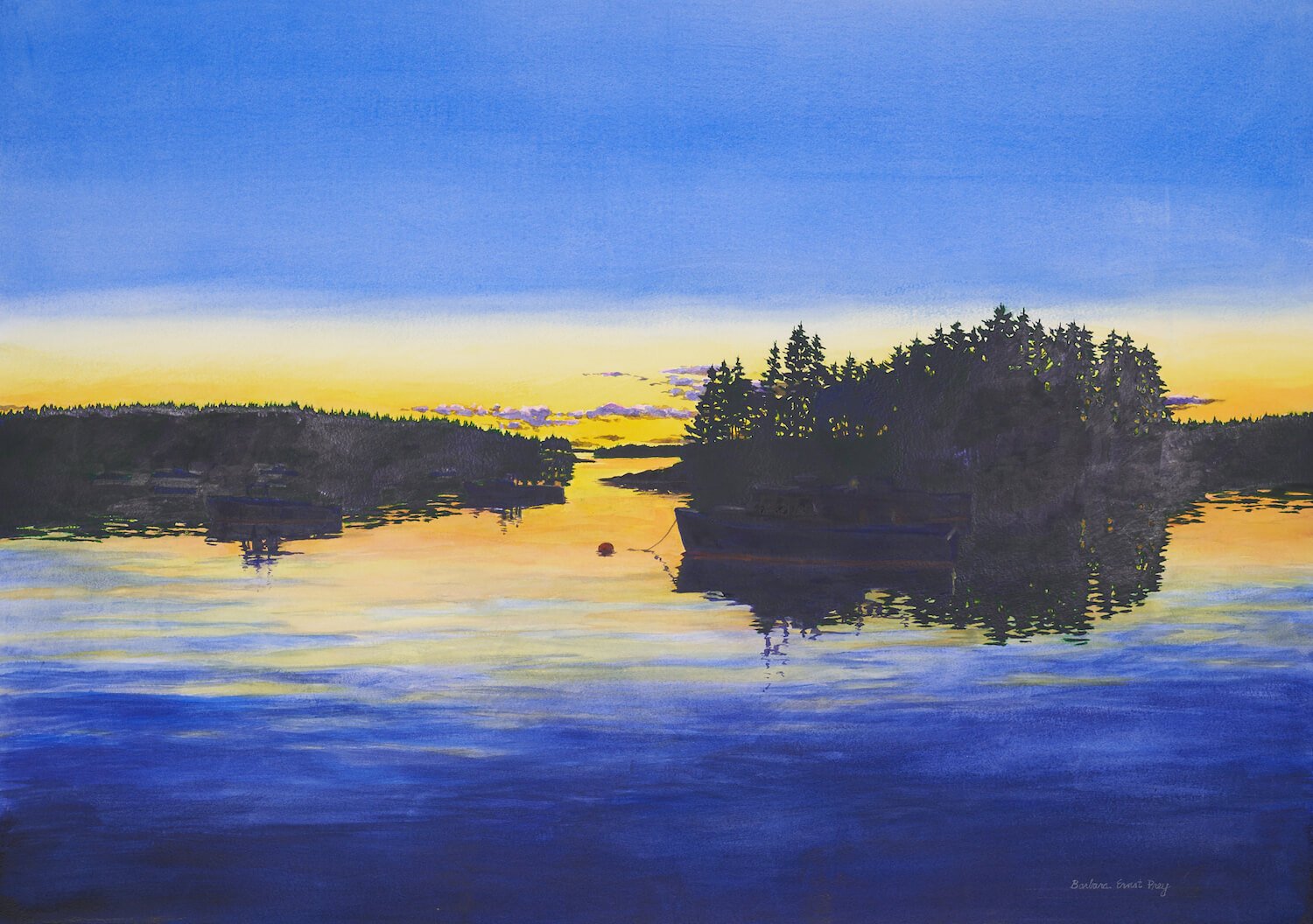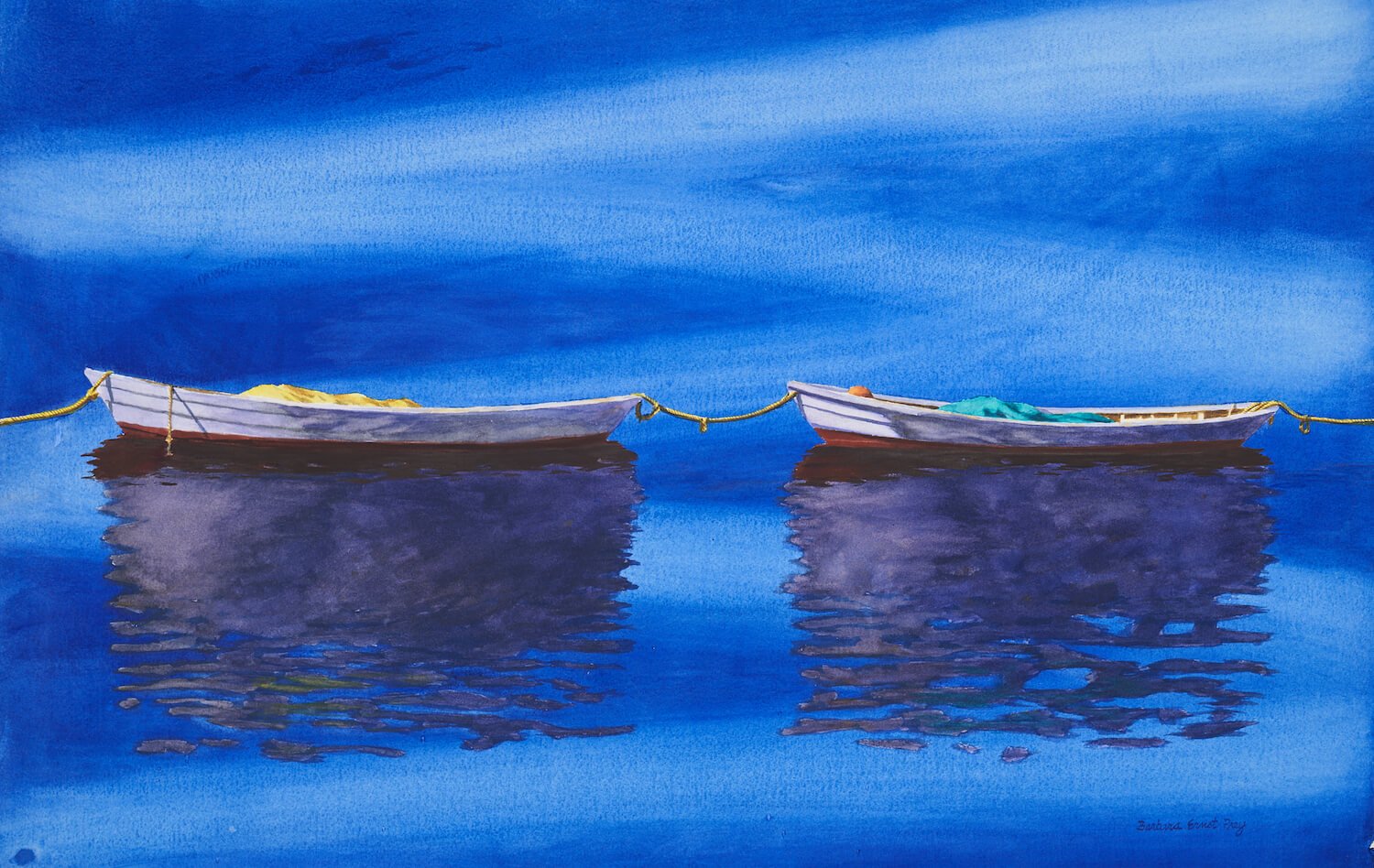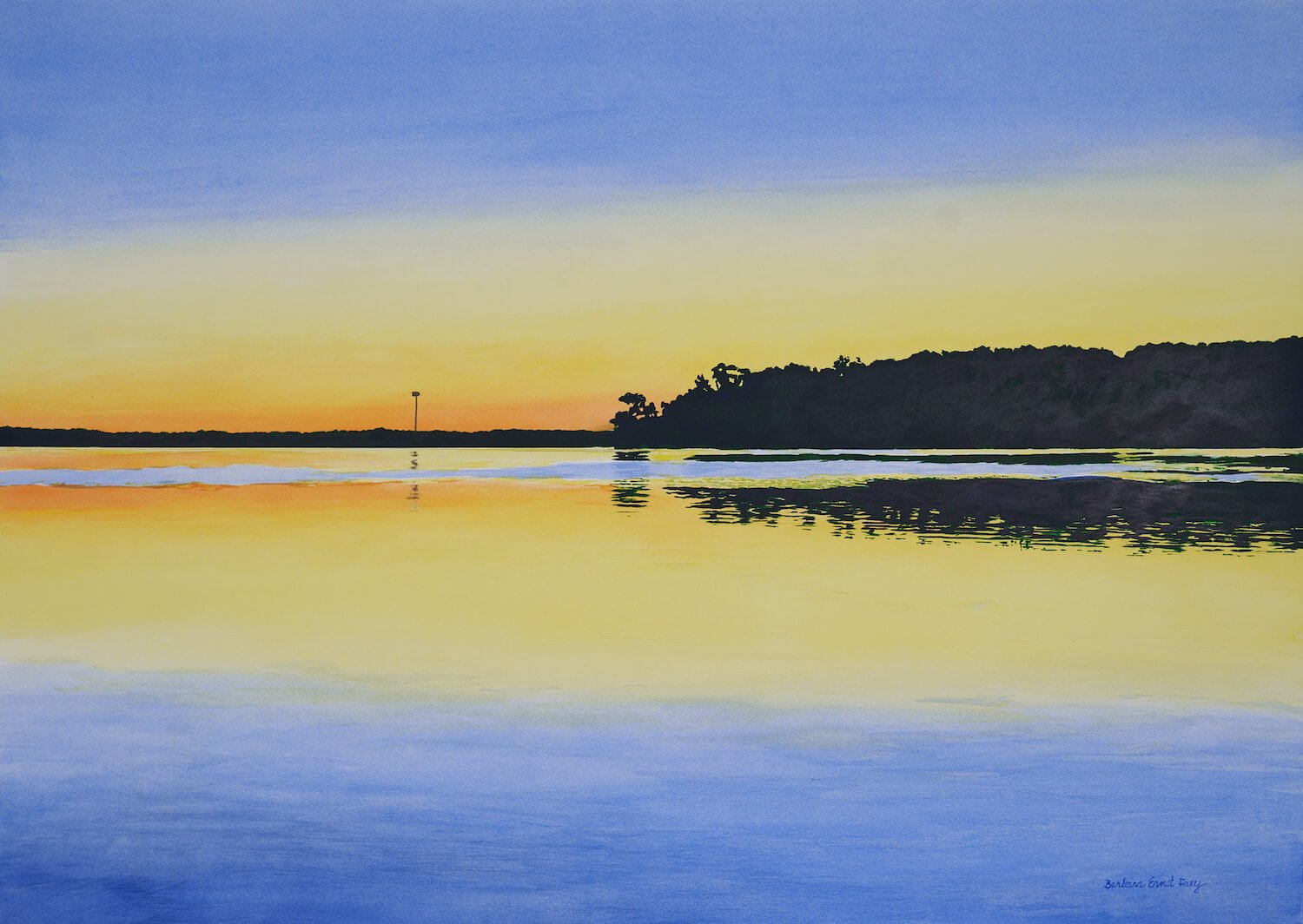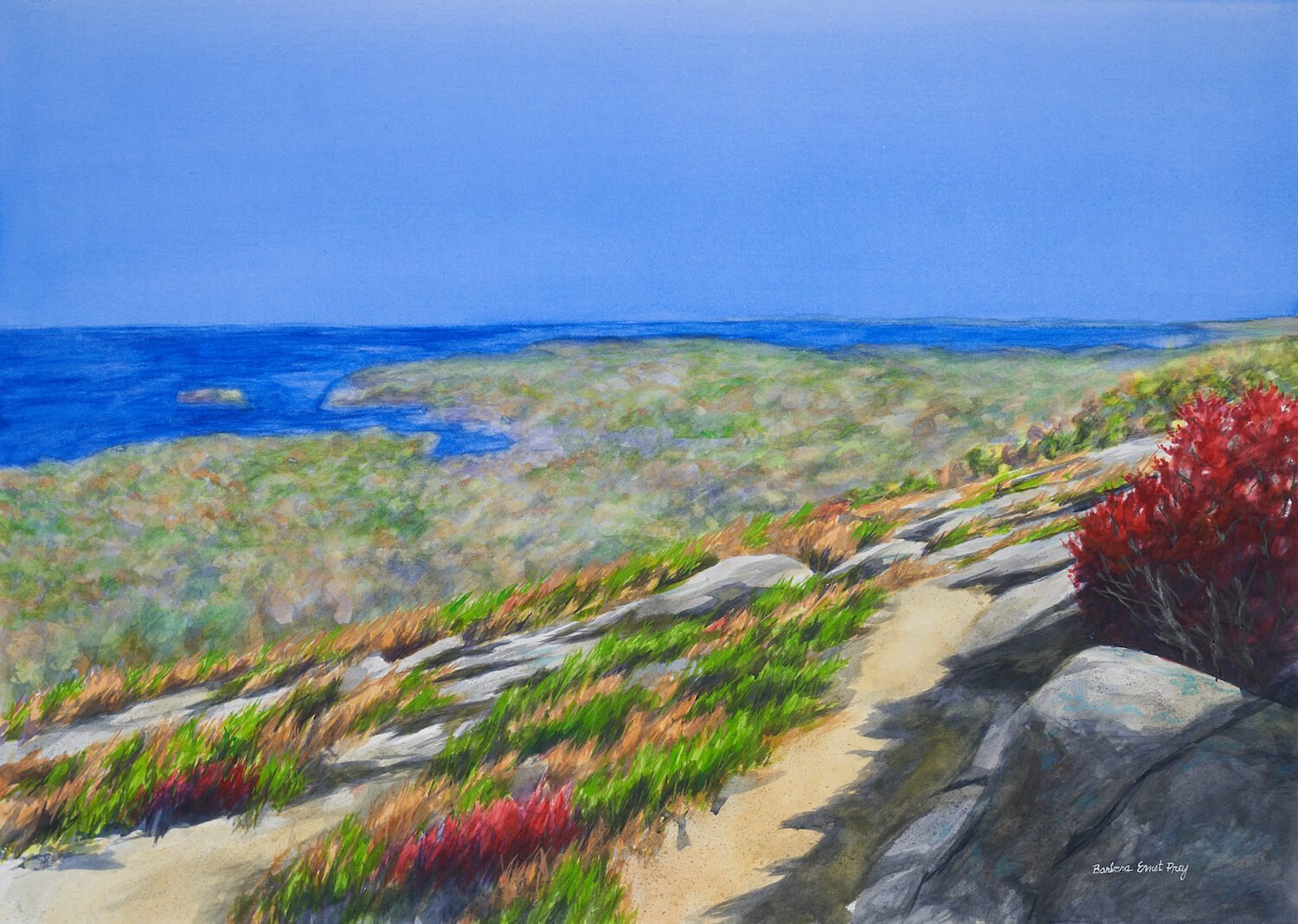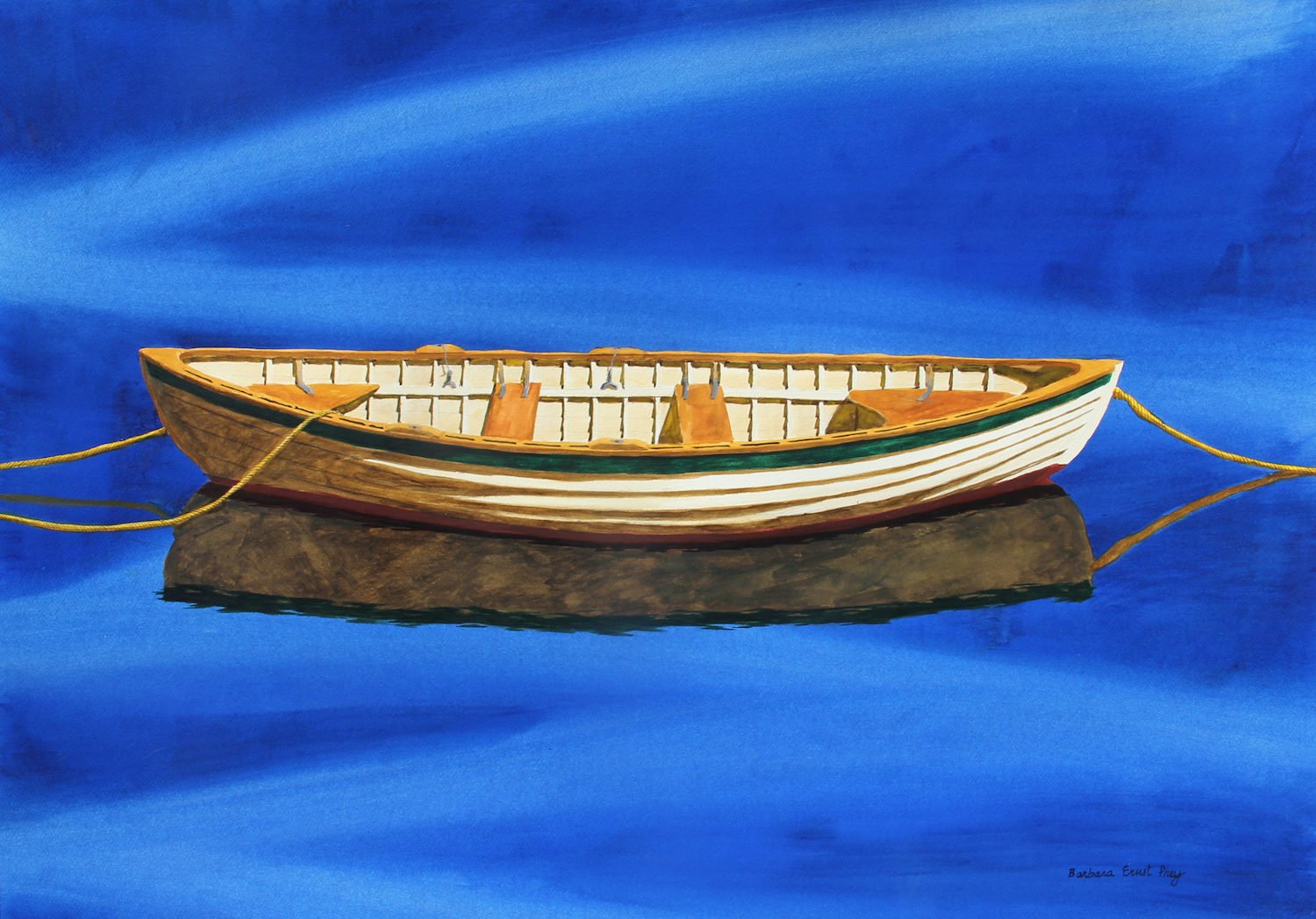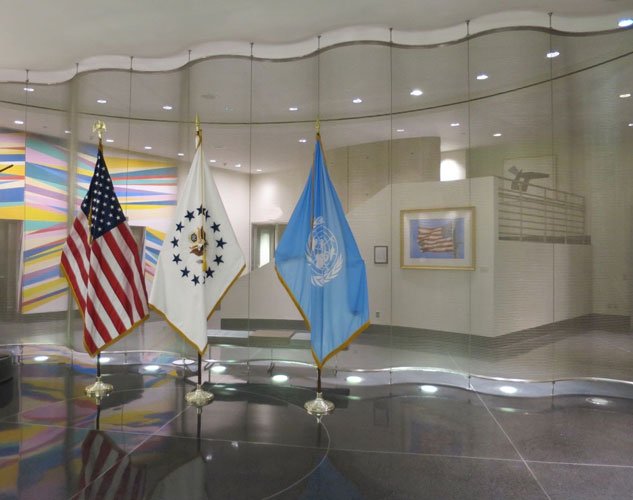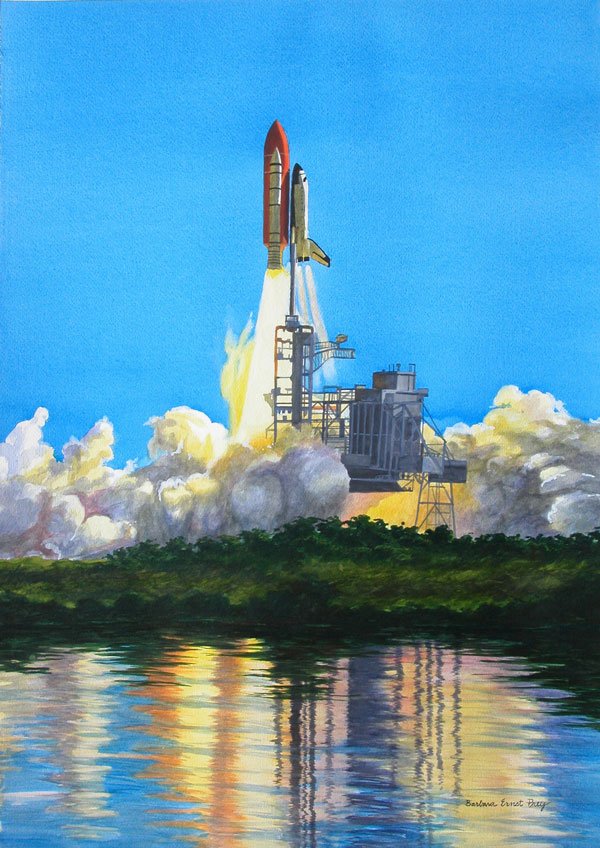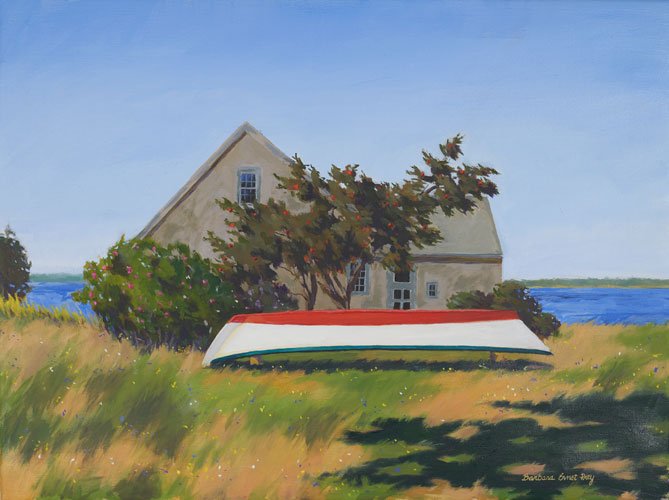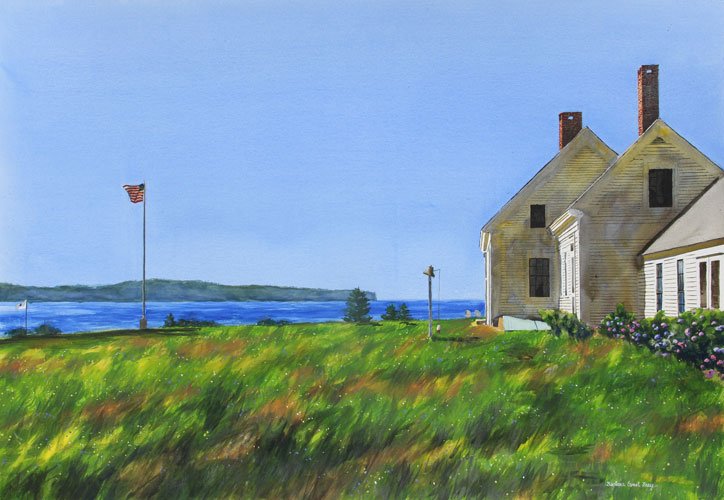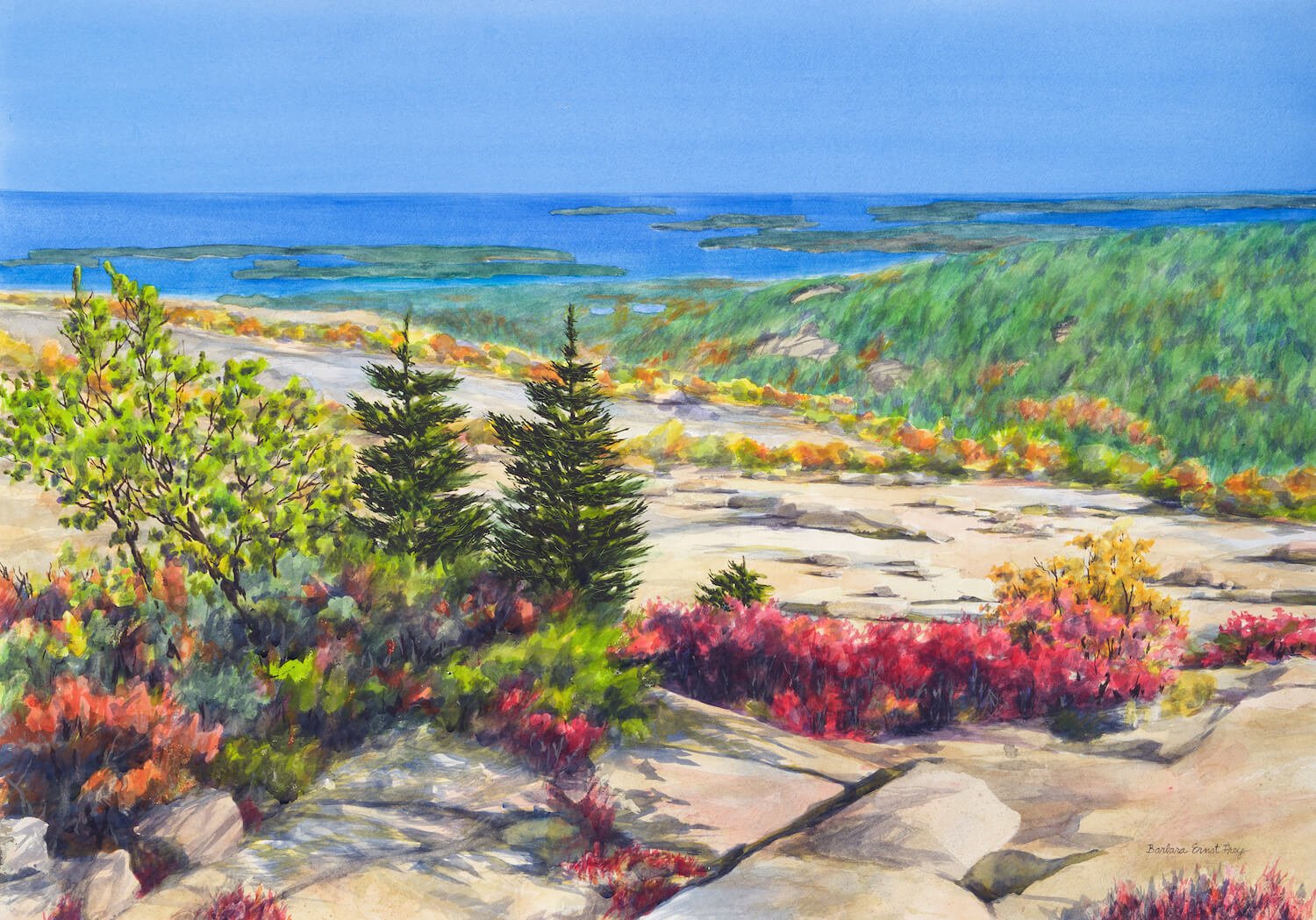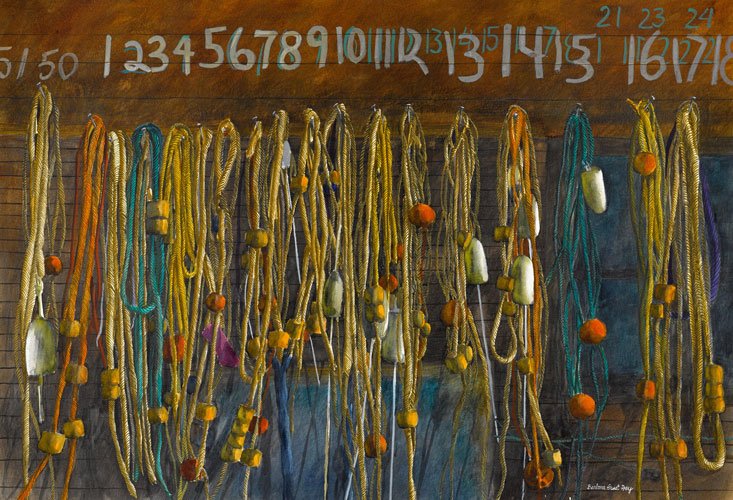Touching Lives With A Paintbrush
CREATIVE MAINE MAGAZINE
By Nancy Gordon, September, 2021
Barbara drawing at the White House
“I was commissioned in 2002 by the President [George W. Bush] and First Lady to paint the White House Christmas card. I chose to paint the diplomatic reception room.”
—Barbara Prey, artist
Tell us about your Maine heritage and how that led to establishing Barbara Prey Projects in Port Clyde?
I have deep roots in Maine. My family were the first settlers of North Haven and Midcoast Maine during the 1700s. In many ways, I have returned to paint what is very close to me.
I have been exhibiting in Maine for close to 40 years, and this is the 21st anniversary of Barbara Prey Projects in Port Clyde. It is a truly wonderful exhibition space. This building was the former historic Village Inn with two floors of exhibition space.
Did you grow up in Maine?
I grew up on Long Island. My mother had a large studio in the house, so I grew up painting with her and tagging along to visit the many museums in New York.
How did having access to New York City influence your art career and way of seeing?
I don’t think I can answer that in a few sentences. Both my parents had lived and worked in New York City and my mother took me to the museums when I was growing up so I was fortunate to see great art not only in the permanent collections but in the traveling exhibitions that came through. An early Cezanne exhibition at the Metropolitan Museum of Art (Met) was memorable. I took drawing courses at The Brooklyn Museum, the Art Students League, and I worked at Sotheby’s, preparing artworks for auction, which again was a wonderful way to see great works of art and to continue to expand my vision and artistic vocabulary, and had an internship at the Met.
I’d spend my lunch breaks at the Frick while interning at the Met, a collection I still visit often. The Frick served as a wonderful muse when my artwork began appearing in The New Yorker, the New York Times, Gourmet and other magazines. Also, living in New York in my early 20s was very important for my art career, allowing me to follow gallery and museum openings, auctions and exhibits, and be in the mix.
Your mom was a painter and a designer, with a stint at Pratt, bringing great diversity to your early art sensibilities and education. Please tell us about her gifts.
My mother was the head of the design department at Pratt for close to 10 years. She was an incredibly gifted artist. I was very fortunate to have her as a role model and to take many painting trips together.
Any advice that has stayed with you?
I continue to always visit museums and study great artwork. My mother’s commitment to her artwork set an example for me.
College? Art school?
I received a scholarship to the San Francisco Art Institute as a teenager and attended Williams College, where I graduated with honors in art history. I was the last student of the well-known “Williams Mafia.” I learned from the three extraordinary educators: professors William H. Pierson Jr., Whitney S. Stoddard and S. Lane Faison Jr. These mentors built a group of Williams alumni artists, curators and directors who became world-renowned. Having access to and learning from these world-class scholars at Williams was important in my development.
I was then awarded a Fulbright Scholarship to study Southern German Baroque architecture, where I continued to paint and exhibit throughout Europe. I ended up PRESS 3 illustrating the travel sections for Gourmet magazine for many years, and the travel section of the New York Times as well thanks to this opportunity. I’ve been included in five museum exhibitions in the past three years and it is exciting to now be exhibited with the artists I have admired and studied, such as Titian, Matisse, Miro, Picasso, Klee or Kandinsky. To have my work hang next to these artists is exciting.
I received a grant from the Henry Luce Foundation (the program places 15 Americans a year in Asia to enhance the understanding of Asia among potential leaders in American society) and spent a year painting and exhibiting in Asia. This opened my world view to a valuable international perspective.
Why have you chosen watercolor as your medium?
I began oil painting with my mother when I was 8, and my first painting was in a juried art exhibition at age 9. I chose watercolor because my mother was such a great oil painter and I wanted my own voice.
How do you get your colors to sizzle?
I always try to push the watercolor medium in new directions. I have learned from the vibrant colors of Kandinsky and Nolde, Klee and Matisse, to name a few, and built off them in my pieces. I have always looked for artists using color throughout history, from medieval manuscripts to stained glass.
What first attracts you to a scene?
The personal connection to a scene, something inside or instinctive, attracts me. Good design is important too. It could be color, light, something I’ve seen briefly or something I have been thinking about for 10 years.
“Watercolors in Maine have been male dominated,” you said. Why?
Winslow Homer, Edward Hopper, Frederic Church … women weren’t out traveling and painting. My generation is different.
When we talked, you mentioned the importance of the design of a painting. What does this mean to you?
When your mother was head of the Design Department at Pratt Art Institute in New York, you grow up very aware of design—and good design. Color, light, composition and design are the armature for the painting and hold the subject and narrative. My paintings may not seem abstract but if you look at them you will see underneath is a design which is very abstract and ties everything together.
Acadia, 2017, 29 x 40 inches, watercolor on paper
Do any of your painting stories?
God and Country, 30 x 22 inches, watercolor and dry brush on paper
My painting God and Country (30 x 22 inches, watercolor and dry brush on paper) was painted in Maine after 9/11 and is part of my 9/11 series. It’s the front of an old church with flags and bows. The U.S. Ambassador to France came to my studio to choose a painting for exhibition at the U.S. Embassy Residence in Paris (included with a nice selection of John Singer Sargents and Homers). He chose this painting because the colors of bows were the color of France’s flag next to our flag. To him it was a wonderful metaphor of French-American friendship—to me it was something I had painted remembering people I knew who died in the attacks on the World Trade [Center] towers. The painting hung for a number of years in the entry of the U.S. Embassy Residence in Paris, in perhaps the most prominent spot. It was a great example of how art sometimes has a story of its own.
Let’s talk honors …
1. You’ve done four paintings for NASA.Which flights?
I was commissioned by NASA to paint four paintings for their collection. NASA commissions well-known artists to document space history.
X-43, 20 x 30 inches
I was commissioned to paint the International Space Station, the Columbia Disaster, Discovery and the fastest aircraft in the world, X-43 (X-43, 20 x 30 inches). My NASA work has helped me see the world from a different universal perspective. It was exciting to be included in the exhibit “NASA Art: 50 Years of Exploration” at the Smithsonian National Air and Space Museum, and the exhibit “NASA Art: 60 Years,” where I was one of a handful of women included.
2. You are one of two living women with work in the White House permanent collection.
I was commissioned in 2002 by the President [George W. Bush] and First Lady to paint the White House Christmas card. I chose to paint the diplomatic reception room. The only way to be in the permanent collection of the White House is to be dead or to paint the White House Christmas card.
The 2003 White House Christmas Card
3. And the National Council of the Arts?
I am a presidential appointee to the National Council of Arts, advisory board to the National Endowment for the Arts. We vote on the grants for all the arts in America, advise the chairman of the National Endowment for the Arts and nominate the National Medal of Arts awardees.
I am one of the few visual artists; the other female painter was Helen Frankenthaler. It is an honor to be appointed by the President and to serve.
When you look at your art journey, what stands out?
Everything I’ve just mentioned! More recently, I was commissioned by Mass MoCA to paint the largest watercolor in the world, 8 x 15 feet, for their new Building 6, titled Mass MoCA Building 6 Commission. There are only a handful of artists in this space: Jenny Holzer, James Turrell, Laurie Anderson… It is very exciting to see the painting currently on long-term exhibition. The director calls it a “tour de force” and the Boston Globe compared my work to Vermeer.
What draws you to return to Maine every year to paint?
I look forward to my annual exhibition at Barbara Prey Projects, to paint and explore new themes for my work.
What do you hope to give people through your art?
There are so many lovely stories on how my paintings have touched lives. Each person brings a unique viewpoint to my work. During the pandemic, my paintings pointed to a greater connection to our world, which can be healing during difficult moments.
Read the article at creativemainemag.com.


